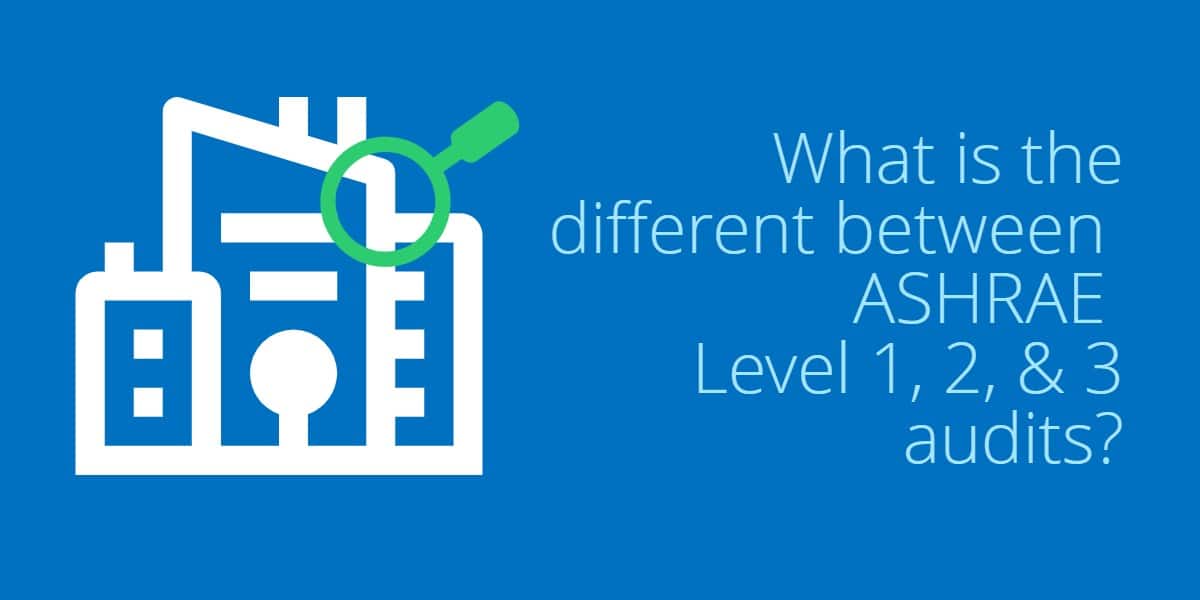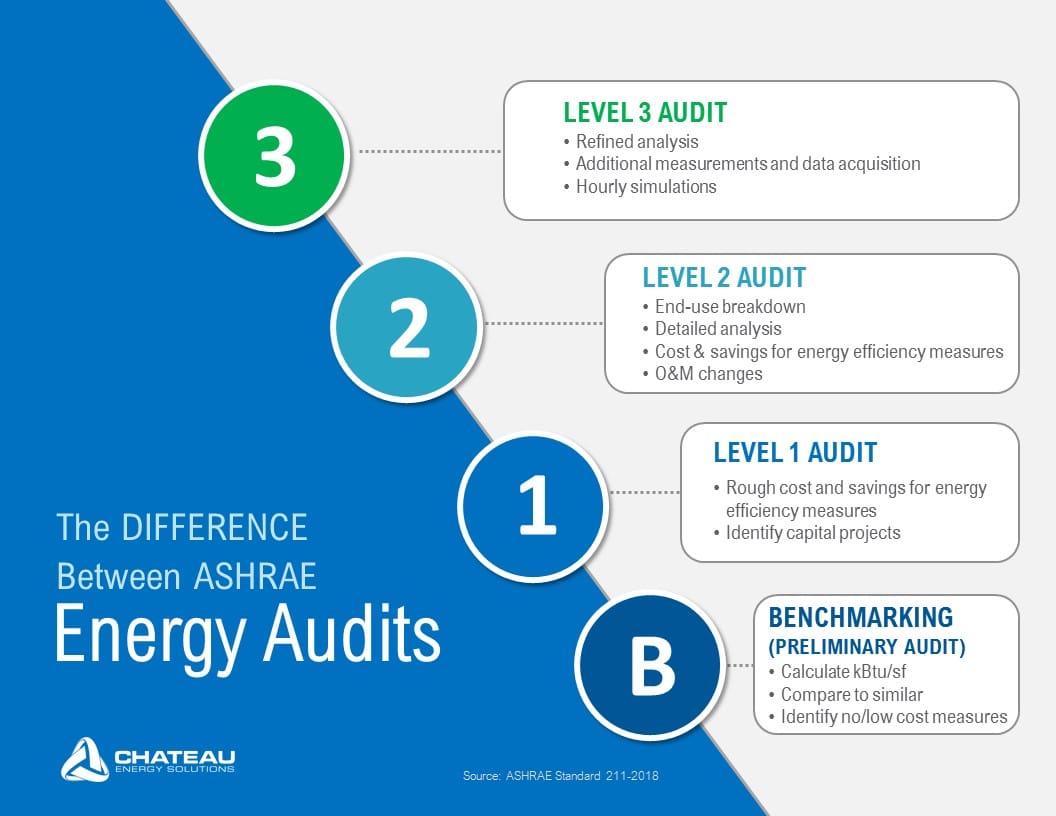
 Posted by Pam Hoddinott
Posted by Pam Hoddinott Getting an energy audit is an important starting point for optimizing the building’s energy and financial performance. Audits, also called assessments, provide a record of your asset infrastructure, energy usage, and energy costs. Conducting a building audit gives you a measuring stick of how your facility and its assets are performing today and where work can be done to make it more efficient moving forward. There are several levels of energy audits offered, and sometimes understanding the difference between ASHRAE Level 1, 2, and 3 audits can be confusing. This is a guide to help you determine which one is the best fit for your building.
First, let’s start with a high-level understanding of the purpose of ASHRAE audits. Energy audits identify and develop building and system modifications that will reduce the energy use and/or cost of operating the facility. An energy audit includes the following steps:
The American Society of Heating, Refrigeration and Air-Conditioning Engineers (ASHRAE) is a professional association seeking to advance heating, ventilation, air conditioning and refrigeration systems design and construction. ASHRAE defines best practices for energy survey and analysis and also sets the guidelines for Level 1, 2, and 3 energy audits in its Standard 211-2018.
It is important to understand the different levels of audits – from simple to complex. According to the Pacific Northwest National Laboratory, “as audit complexity increases, so does thoroughness of the site assessment, the amount of data collected and the detail provided in the final audit report.”
ASHRAE Level 1 Audit
The ASHRAE Level 1 audit is also called a simple audit, a screening audit, or a walk-through audit. This is a basic audit of a building. It includes brief interviews with the facility staff, a review of utility bills and other relevant operating data, and a limited walk through of the building surveying its systems and operations. The ASHRAE Level 1 audit identifies high-level opportunities for energy and cost savings. A report provides potential no-cost and low-cost energy conservation measures, a summary of utility data, and potential capital improvements that warrant further consideration. The report is a tool building owners can use to determine how well the building is performing and serves as a baseline for measuring future improvements. It can also guide building owners on how best to prioritize energy efficient projects or if further evaluation is needed.
ASHRAE Level 2 Audit
The ASHRAE Level 2 audit can include the findings of a previous ASHRAE Level 1 audit, and it is a more detailed analysis of the building and its energy use. A Level 2 energy audits will identify and provide savings and cost analysis of all practical measures that meet the owner’s constraints and economic criteria. Key facility staff is interviewed in-depth to gain a better understanding of the operational strategies and any existing problem areas in the building systems. Architectural, mechanical, electrical, and controls drawings are reviewed. A detailed energy report is provided that includes energy usage patterns, recommended energy efficiency measures and corresponding economics, and implementation guidelines. Research is also done to determine available utility rebates and incentives that are applicable for the suggested efficiency measures and an economic analysis is performed based on simple payback. This level of detail and financial analysis in an ASHRAE Level 2 audit provides sufficient information for facility staff to justify energy efficient project implementation.
ASHRAE Level 3 Audit
An ASHRAE Leve 3 audit is also known as an Investment Grade Audit. This is the most detailed and rigorous of the audits and the engineering analysis of this audit focuses on the capital-intensive projects identified in an ASHRAE Level 2 audit. Utility data is supplemented with monitoring data. Data from the building automation system or from data loggers may be used to collect detailed information from major energy-consuming systems during an expanded time of weeks or months. This data is used to create a whole building model simulation, where a computer simulation models the way a building would operate before and after the energy efficiency measures or major capital projects were implemented. Building owners can use this expanded level of detail to feel confident in determining where to make major capital improvements.
We should note that there is also a term sometimes used called a Preliminary Energy Audit which isn’t really an audit, but rather a benchmarking of a building’s current energy use. This is the most rudimentary of building audits typically includes an analysis of historic utility use and costs. The facility is then benchmarked against similar buildings to determine if further engineering analysis will produce significant energy savings.
In the next Energy Audit blog series 5 Steps to Getting the Most Out of an Energy Audit, we will discuss how to make the most of an energy audit and what steps to take before and after an energy audit.
Are you considering a Level 1, 2, or 3 ASHRAE building audit? Want to know more? Contact Chateau Energy Solutions.
Click on the infographic below for more details.
 Difference between ASHRAE Level 1, 2, & 3 Audits
Difference between ASHRAE Level 1, 2, & 3 Audits
Chateau Energy Solutions Making Energy an Asset®
Ready to get started on the path to energy efficiency and sustainability?